Mastering Video Creation: A Comprehensive Guide
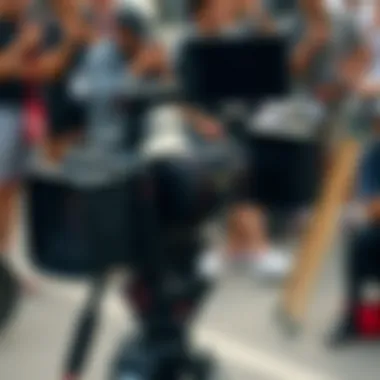

Intro
In the digital age, video creation stands as one of the most captivating forms of storytelling. It doesn’t just capture moments; it encapsulates emotions and experiences in a vibrant medium. Whether you're kiteboarding across the waves or instructing a group of eager learners, the ability to create striking videos can significantly enhance your connection with your audience. You may find that the art of video production is like riding the wind; once you grasp the fundamentals, you can effortlessly glide towards creative horizons.
This guide aims to dissect the components of effective video creation, providing both novice videographers and seasoned creators with the insights needed to produce high-quality footage. Here, we'll explore vital elements such as essential equipment, compositional techniques, lighting strategies, and sound design. Each aspect contributes to the overall narrative, ensuring your audience experiences every wave and gust of wind as if they were there themselves.
Let’s kick off this journey with the necessary tools of the trade, as a craftsman can only be as good as his tools.
Equipment Insights
When it comes to video creation, having the right gear can make all the difference. Be it cameras, lenses, or editing software, understanding your equipment can elevate your production quality significantly.
Latest Gear Reviews
The market is flooded with options, making it a daunting task to choose the right video equipment. However, certain products stand out because of their reliability and versatility.
- Canon EOS R5: This mirrorless camera showcases exceptional video capabilities with 8K recording. It's perfect for capturing those exhilarating kiteboarding moments.
- DJI Ronin-S: This gimbal stabilizer enables smooth shots, which are crucial when filming dynamic sports like kiteboarding.
- Rode VideoMic Pro: Exceptional audio is key. This compact microphone ensures that every sound, from the rush of wind to the splash of water, is captured clearly.
Essential Gear Maintenance
Keeping your equipment in tip-top shape is crucial for longevity and performance. Here are some tips to maintain your gear effectively:
- Regularly clean lenses with a microfiber cloth to avoid smudges or dirt.
- Store cameras in a cool, dry place to prevent moisture damage.
- Check and update firmware for cameras and editing software to ensure optimal functionality.
"A well-maintained tool is half the job done." – Unknown
Technique Exploration
Understanding how to use your equipment is half the battle; the other half is mastering the techniques necessary to create captivating content.
Beginner Techniques
For those just starting out, here are some fundamental techniques to get you on the right path:
- Rule of Thirds: This composition guideline helps create balanced videos. Imagine dividing your frame into a 3x3 grid. Placing points of interest along these lines or at intersections adds intrigue.
- Basic Camera Movements: Practice panning and tilting. A simple movement can drastically change the dynamics of your shot.
Advanced Maneuvers
Once you’re comfortable with the basics, you can explore more sophisticated techniques:
- Time-lapse Shooting: Capture the beauty of changing landscapes or moving clouds within a quick sequence, providing a captivating glimpse into the passage of time.
- Slow Motion: Highlight moments of excitement, such as the spray of water as the kiteboarder lands a jump. This requires higher frame rates for that silky smooth effect.
As you continue your video creation journey, remember that practice makes perfect. With each video, you’re not just recording moments, but fabricating art that speaks to viewers in ways that a still image cannot. Through mastering your gear and enhancing your techniques, you can truly open up a new world of expression.
For additional insights and community support, consider exploring resources like Reddit where videographers share their experiences and learnings, or check out Wikipedia for a deeper understanding of video art and techniques.
Understanding Video Fundamentals
Understanding the foundational elements of video creation is vital for both enthusiastic beginners and seasoned professionals. This knowledge sets the stage for effective storytelling and visual impact. As any kiteboarder would attest, knowing the wind and water conditions can make or break a session, the same applies to video creation.
Focusing on the essentials begins with the critical importance of planning, which allows a creator to set clear goals, determine the necessary resources, and outline the expected outcome of the project. Proper preparation helps eliminate confusion and keeps the production on a smooth path.
The Importance of Planning
Planning is the backbone of any successful video project. Without a well-thought-out plan, you might find yourself knee-deep in disorganization. It isn’t just about picking a location or deciding your subject; it’s about having a vision. The planning phase includes conceptualizing your idea, creating a storyboard, and drafting a shot list. This lays the groundwork for your filming schedule and budget, streamlining the process to ensure everything runs like a well-oiled machine.
Consider asking yourself: What message do I want to convey? How will I capture it visually? These questions will promote clarity and guide your decisions. Not only does planning lead to better footage, but it also saves time during the edit, as having a solid starting point eliminates headaches down the line.
Choosing the Right Equipment
The equipment you choose can significantly impact your video's quality. It’s like choosing the right board for a kiteboarding session; you wouldn’t want to grab a surfboard for a day of free-flying. Each piece of gear plays a distinct role in the video production process.
Types of Cameras
There’s a multitude of cameras out there, each catering to different styles and budgets. For instance, Digital Single-Lens Reflex (DSLR) cameras offer versatility and high-quality imagery, making them a popular choice among videographers. The unique feature of DSLRs is their interchangeable lenses, allowing users to switch from wide angles to telephoto shots on the fly. That flexibility can be tremendously beneficial in capturing various scenes.
While DSLRs may favor versatility, mirrorless cameras are gaining traction, known for their compact size and lightweight build. They provide similar quality without the bulk, a key advantage for those looking to travel light while kiteboarding.
Whether opting for a DSLR or a mirrorless camera comes down to personal preference and intended use, but having the right camera can elevate your video project to new heights.
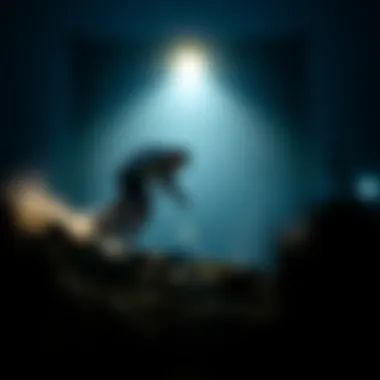
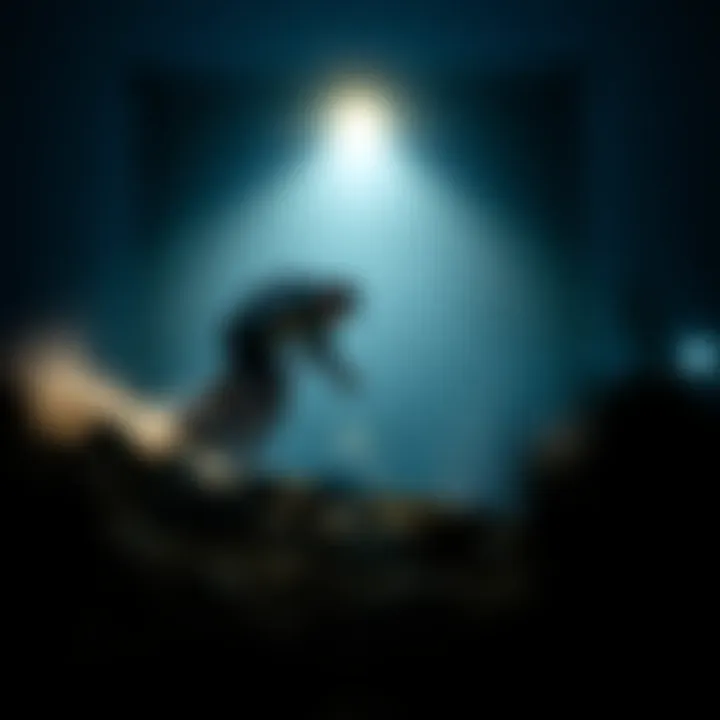
Lenses and Their Impact
The lens you attach to your camera is equally as crucial as the camera itself. Each lens serves a specific function and shapes how the story is told. For example, a 50mm prime lens is phenomenal for portraits and cinematic shots. In contrast, a wide-angle lens opens up a whole new world of possibilities for capturing broader landscapes or those epic, sweeping shots of the ocean.
The key characteristic of lenses is their focal lengths, which greatly influence depth of field. A longer focal length compresses background elements, while a shorter length gives an expansive view, lending a narrative style to shots. Understanding how lenses work allows videographers to make informed decisions about how to portray the scene effectively, whether it’s focusing on a kiteboarder slicing through waves or capturing the vast ocean landscape in its all-encompassing beauty.
Tripods and Stabilizers
When it comes to video stability, tripods and stabilizers reign supreme. Unsteady shots can give viewers a headache, ruining the overall experience. A tripod ensures your shots are stable, while a gimbal stabilizer enhances mobility, perfect for action shots like those on a kiteboard.
The key advantage of tripods is their ability to create fixed and stable shots, offering a reliable platform for interviews or time-lapse footage. However, they can sometimes be cumbersome, especially in dynamic locations such as the beach where moving quickly is essential. Gimbals, on the other hand, come with the trade-off of requiring practice to master but offer a smooth, fluid feel to moving shots, making them a desired choice when capturing action performances.
Each piece of equipment serves a unique purpose and can greatly influence the quality of your video. Ultimately, understanding and selecting the right hardware will empower you to elevate your videography skills and will, without question, impact the stories you tell through your lens.
Camera Settings and Techniques
When it comes to creating videos that resonate, understanding camera settings and techniques is like finding a hidden key to unlock a treasure chest of possibilities. The way you manipulate your camera can change the story you tell and the emotions you invoke. Knowledge of camera settings, particularly exposure, focusing, and how you frame your shots, provides not just technical prowess but also the ability to convey your artistic vision effectively.
Understanding Exposure
Exposure is the magic ingredient that determines how light or dark your video appears, influencing everything from mood to clarity. When you dial in your exposure correctly, you’re essentially setting the stage for your visuals. It's crucial to get this part right because incorrect exposure can mean the difference between a captivating scene and a washed-out disaster.
Aperture
Aperture refers to the size of the opening in the lens through which light travels. The larger the aperture (represented by a smaller f-number), the more light hits the sensor. This is particularly useful in low-light environments like dimly lit bars or sunset shoots. A key characteristic of aperture is its ability to create a shallow depth of field, making the background blurry while keeping the subject sharp. This effect is beneficial for interviews or cinematic b-roll footage, as it draws attention to the subject.
However, larger apertures can lead to focus challenges, particularly if you're moving quickly or shooting at wide angles. That blurrier background also might not work in every context. Having control over aperture gives you creative power, but it also requires a good eye for balancing light and clarity.
Shutter Speed
Shutter speed controls the length of time light hits the camera sensor. A fast shutter speed freezes motion—think of capturing a kiteboarder soaring through the air with their board lifted high. This can be incredible for action shots where clarity is key. The specific characteristic of a fast shutter speed allows you to catch moving subjects without blur, which is a big plus in sports videography.
On the flip side, a slow shutter speed captures more motion but introduces a dreamy blur effect. There's a trade-off, as going too slow without enough light can lead to underexposed footage. Proper use of shutter speed is essential for matching the flow of your story, whether it’s fast-paced action or a tranquil scene.
ISO
ISO signifies the sensitivity of your camera’s sensor to light. A higher ISO lets you shoot in darker settings but can also introduce graininess. This is a crucial aspect because while you want to see what’s happening, clarity must not be sacrificed. Higher ISOs are great for late evening sessions on the beach, where you want to capture those last rays of sun just before darkness takes over.
The advantage of ISO is its flexibility. However, using high ISO in well-lit settings can drown your footage in noise. The balance is finicky but knowing how to set your ISO can save your shoot at crucial moments.
Focusing Techniques
Equally as important as exposure, focusing techniques can dictate the clarity of your subject and the overall crispness of the video. Knowing how and when to lock in focus transforms your shooting game.
Manual vs. Autofocus
The battle between manual and autofocus can be something of a dilemma. Autofocus offers convenience, especially when you're filming something unpredictable—like a kiteboarding competition where the action is fast and furious. The key characteristic of autofocus is its speed and ability to keep up with moving subjects.
Nonetheless, manual focus offers a level of precision that autofocus often struggles to achieve, especially in complex scenes. There’s a unique feature of manual focus that allows for creative control. However, tweaking focus manually while recording can be tricky and requires steadiness. Knowing when to deploy each technique can greatly enhance your footage.
Achieving Depth of Field
Depth of field is about what is sharp and what fades into the background. Achieving the right depth of field can profoundly affect viewer engagement. A shallow depth of field creates intimacy, drawing the viewer directly into the action, useful for interviews or closely-monitored scenes.
The serenity of a deep depth of field works wonders in landscapes or action shots where context is essential. However, executing your depth of field choices requires familiarity with aperture, focusing, and composition. Balancing these elements means wielding your camera like a maestro leading an orchestra of visuals.
"Your camera is a tool for responding to your environment. Master your settings, and you can tell stories that resonate."
By mastering camera settings and techniques, you’re not merely filming; you're crafting visual narratives that resonate deeply. Ultimately, knowing how to manipulate these settings means you’re on the path to elevating your video creation game.
Composition and Framing
In the vibrant world of video creation, composition and framing serve as the backbone of storytelling. It’s not merely about placing a camera in front of a subject; it’s about thoughtfully arranging the elements within the frame to evoke emotions, convey messages, and draw viewers into the narrative. For kiteboarders and enthusiasts alike, capturing the thrill and finesse of the sport requires a keen eye for detail and an understanding of how visual elements interact within the video space.
Rule of Thirds
One fundamental principle in video composition is the Rule of Thirds. Imagine dividing your frame into a grid of nine equal parts, like three vertical lines and three horizontal lines. The theory suggests that placing your subject along these lines or at their intersections results in a more balanced and engaging composition. This technique helps to guide the viewer's eye naturally through the action.
When filming an exhilarating kiteboarding jump, for instance, positioning the kite on one third of the frame while having the boarder on the opposite third can showcase the dynamics of the movement and create a sense of space that captivates the audience. This method not only enhances aesthetic appeal but also maintains focus on the key action, making the video more immersive.
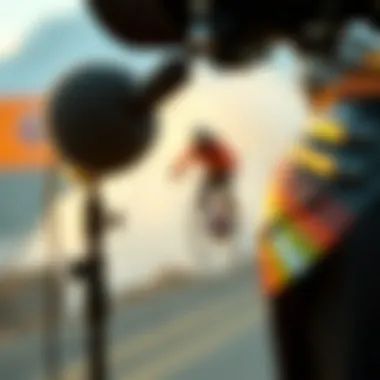
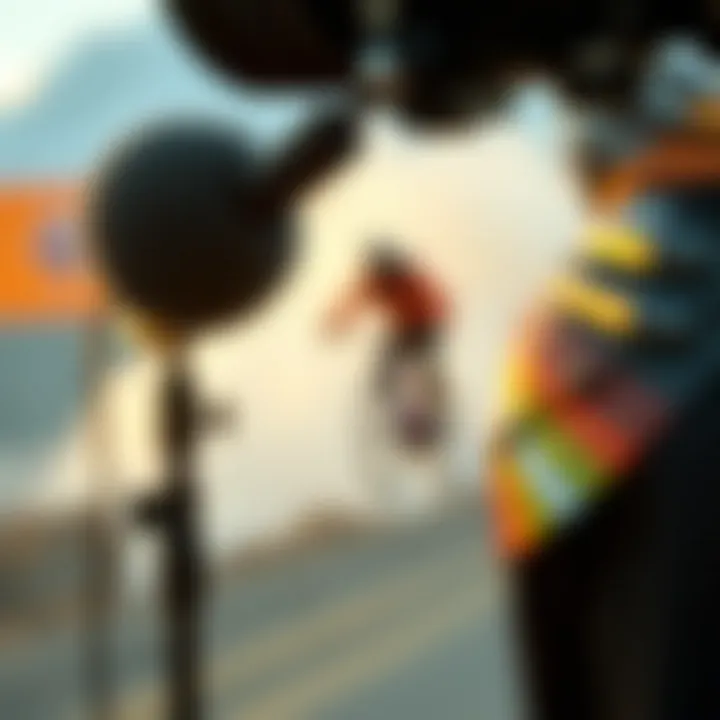
Leading Lines and Symmetry
Next up is leading lines, a powerful technique where natural lines in the environment draw the viewer's gaze to the subject. Imagine the shoreline or the horizon in kiteboarding footage. These lines can create a path that leads directly to the kiteboarder, enhancing the sense of motion and speed. Using leading lines effectively can also convey depth, making your videos feel more three-dimensional and alive.
Symmetry, on the other hand, can invoke a sense of order and balance in your framing. For instance, if you shoot a kiteboarder directly in front of the sun with a mirrored reflection on the water, it creates a visually striking image. Like looking into a well-polished mirror, it captures attention and leaves a lasting impact on viewers, while emphasizing the beauty of the sport. Symmetrical compositions often evoke feelings of tranquility, making them a fantastic choice for more contemplative video segments.
Using Negative Space
Negative space is another vital aspect of composition that many videographers overlook. This refers to the empty or unfilled areas surrounding your main subject. Rather than filling every corner of the frame, allowing for some free space can add sophistication to your video. For example, when documenting a kiteboarding session during a sunset, you might capture a lone rider against a vast, open sky. The expansive negative space serves to emphasize the rider's isolation, skill, or the serenity of the moment.
Utilizing negative space not only helps in conveying a message but also creates breathing room within your visuals. It accentuates contrast, making the subject pop out of the frame. Moreover, it can portray emotion effectively, allowing audiences to connect with the story on a deeper level.
"Composition isn't just about filling space; it's about meditation and engaging visually with your surroundings."
Lighting Techniques
Lighting is the backbone of any video creation workflow. It can make or break the quality of your footage, setting the mood and tone of your story. Without proper lighting, even the best camera and editing skills are rendered ineffective. This section will delve into both natural and artificial lighting techniques, emphasizing their roles in crafting visually appealing narratives.
Natural Lighting
Natural lighting harnesses sunlight as your primary source of illumination, making it an economical and readily available option for videographers. It brings a soft, organic feel to videos, often enhancing the true colors present in your subject.
Best Times for Shooting
When it comes to natural lighting, the time of day matters quite a bit. The golden hours—shortly after sunrise and just before sunset—are often considered the sweet spots for filming. During these times, the sun casts a warm, diffused light that creates beautiful shadows and highlights. It’s a popular choice among professionals because it minimizes harsh contrasts and produces a softer look.
However, shooting in the midday sun can result in overly bright scenes filled with harsh shadows, which could be undesirable. If you plan a shoot in these conditions, knowing how to manipulate shadows is crucial to avoid unsatisfactory results.
Using Shadows Effectively
Shadows play a significant role in adding depth and dimension to your video content. They can create dramatic effects and emphasize certain elements within the frame. Using shadows effectively requires a keen eye for composition and the right timing. Filming during those golden hours can produce long, soft shadows that enhance the visual appeal of your footage. This technique can help to give characters a sense of emergence or to create tension in a scene.
However, gone awry, shadows can also obscure details and lead to confusion. Experimenting with shadow positions and angles may require some practice, but mastering this art can elevate your video storytelling, making it more visually compelling.
Artificial Lighting
When natural light isn’t an option, or if you want more control over how your video looks, artificial lighting comes into play. This can include anything from softbox lights to LED panels. Understanding the different types of artificial lighting can vastely improve your video quality.
Types of Lights
There are several types of artificial lights to consider, each with its unique characteristics. Here are a few common types:
- LED Panels: These are energy-efficient and offer adjustable brightness. They’re incredibly versatile, making them a favorite among independent filmmakers.
- Softbox Lights: These diffuse light for a softer output, reducing harsh shadows and giving a more natural look to subjects.
- Ring Lights: Particularly popular among beauty bloggers and vloggers, they provide even lighting and help to eliminate shadows on the face.
Using artificial lights has its advantages, such as consistency and predictability, but poor placement or incorrect intensity can still lead to unflattering results. Knowing how to properly position these lights relative to your subject is essential.
Light Modifiers
Light modifiers are tools that help to shape and control lighting. These can range from simple reflectors to complex diffusion materials. They help soften harsh light, direct it where needed, or even bounce it to add a highlight.
Consider these common types of modifiers:
- Diffusers: They soften the light by dispersing it evenly across a larger area.
- Reflectors: Useful for bouncing light back onto your subject, they help fill in shadows.
- Barn Doors: These allow you to control the spread of the light beam, creating more defined lighting patterns.
Using light modifiers can significantly enhance the overall quality of your videos. They help to sculpt the light in a way that fills out your subjects beautifully while avoiding harsh lighting scenarios. However, inadequate use, or not employing them at all, may also lead to unbalanced lighting, casting subjects in a less desirable light.
In summation, understanding both natural and artificial lighting can open up a world of opportunities in video production. Taking the time to experiment and learn the nuances of these lighting techniques is not just beneficial, it’s essential for producing sublime video content.
Recording Audio
Recording high-quality audio is not just an ancillary task in video production; it is paramount to delivering a professional-looking and sounding piece. Too often, videographers focus intently on visuals while neglecting the sound quality, which can turn a well-shot video into an amateur-looking project. The nuances of audio can make or break the viewer's experience, and as a videographer, especially in active sports like kiteboarding, it’s critical to understand how to effectively capture those sounds that bring your video to life.
Microphone Types
Selecting the right microphone can drastically influence your audio capture quality. There are several types to consider based on your particular needs.
- Lavalier Microphones: These are tiny, clip-on microphones that are excellent for interviews or situations where you want to capture dialogue without being intrusive. They can be easily hidden and often come with wireless options.
- Shotgun Microphones: Known for their directional capabilities, shotgun mics capture sound from specific areas while minimizing background noise. They are ideal for outdoor shoots, like capturing the sound of kiteboarding amidst the wind and waves.
- Handheld Microphones: These are commonly used in live interview settings. They provide good sound quality and are easy to handle, making them versatile for various shooting conditions.
When deciding which microphone to use, consider how much movement you and your subjects will be engaged in. For example, during a kiteboarding session, a shotgun mic mounted on a camera may pick up the roar of the ocean, while a handheld could be used to capture the sounds of conversation between riders. Each type offers unique benefits, and knowing when and where to use them is crucial for capturing crisp, clear audio.


Ambient Sound Considerations
Ambient sound plays a critical role in video production, particularly in action sports. The natural soundscape contributes depth and context to the visuals. Whether it's the rustling of the wind, the splash of water, or the kites soaring overhead, these sounds create an immersive experience for viewers. Here’s what to keep in mind:
- Capture Natural Sounds: When shooting outdoors, especially in environments like beaches or parks, make sure to prioritize the ambient sounds that relate to the setting. Use your shotgun microphone to capture these sounds, as they can enhance the storytelling aspects of your footage.
- Control Background Noise: While natural sounds are important, you also need to manage noise pollution. For instance, wind can be a double-edged sword; it adds a dynamic element but can also overwhelm dialogue. Consider using windshields on mics to reduce this interference.
- Cross-Reference with Video: When editing, always sync your audio with the movement of the video. An audio track that mismatches the visuals can be jarring and distract your audience.
"The right sounds can elevate your visuals, making the viewer feel as if they're right there with you, experiencing every moment."
In the dynamic world of kiteboarding, where every wind gust plays a role, capturing audio alongside the action can create a memorable experience for your viewers. Focus on refining these aspects, and you will create videos that not only look stunning but sound engaging as well.
Editing Your Footage
Editing your footage is where the magic truly happens. It's not enough just to shoot raw clips; the arrangement, pacing, and polish of your video pieces turn a simple collection of images into a captivating story. This section will examine the key components of video editing, emphasizing why it matters significantly to both novices and seasoned creators alike.
Choosing Editing Software
Picking the right editing software is akin to selecting a toolbox for a home renovation project. Different software provides diverse tools and functionalities that cater to various skill levels. Popular options include Adobe Premiere Pro, known for its robust capabilities, and Final Cut Pro, often favored by Mac users for its user-friendly interface. For those just starting out, DaVinci Resolve offers a powerful option with a generous free version. Your choice might depend on factors like budget, required features, user interface, and the specific needs of your project. Each of these programs has unique strengths that can enhance your workflow.
Basic Editing Techniques
Cutting and Trimming
When it comes to cutting and trimming, it's essential to grasp that these tasks are fundamental in refining your video. Cutting refers to removing unwanted portions of footage, while trimming adjusts the start and end points of your clips. The beauty of cutting and trimming lies in the elimination of excess, ensuring that every second of your video serves a purpose. This technique is fitting for any genre of video content. Why is it such a big deal? Because effective cutting can raise the pacing and smoothness of a video, keeping your audience engaged.
Moreover, cutting narrows down to the heart of your story, ensuring clarity. Many videographers agree that a well-edited video can save the narrative, particularly when time constraints are at play. The unique feature of cutting is its ability to amplify tension or pacing through judicious clip removal, giving it a range of advantages during editing.
"The right cut can make a scene; the wrong cut can ruin a masterpiece."
Adding Transitions
Transitions help stitch together scenes in a way that doesn't jar the viewer's senses. Think of them as bridges between two islands of narrative. Common transition types include fades, wipes, and dissolves, each bringing its own flavor to the edit. Adding transitions is a popular choice among videographers looking to create smooth narrative flows. What makes transitions stand out is their ability to guide the viewer's emotional journey through the video. An abrupt cut can feel disorienting, while a graceful fade can evoke a sense of continuity.
However, using too many flashy transitions can detract from the footage itself, making it feel amateurish. Thus, the balance must be found. Recognizing when a transition enhances the story versus when it overshadows it is a skill that improves with practice.
Color Correction and Grading
Color correction and grading is like adding the final coat of paint to a house, providing not only a polished look but also enhancing the storytelling aspect of your footage. Initially, color correction focuses on ensuring that colors are balanced and uniform across different shots, fixing lighting discrepancies that might distract viewers. From there, color grading adds a stylistic touch, allowing you to evoke specific moods and atmosphere, be it a bright summer's day or a moody winter scene.
Understanding color theory can elevate the impact of your work significantly. For instance, warm tones often trigger feelings of comfort and warmth, while cooler tones can convey distance or melancholy. Using software like Adobe Lightroom allows not just for corrections but also for creative color manipulation.
In summary, the editing phase is critical in shaping your final video product. By mastering software selection, cutting and trimming techniques, transitions, and color adjustments, you can transform raw footage into compelling narratives that resonate with your viewers.
Final Touches
Wrapping up your video project with final touches is crucial. It's like polishing a diamond; it makes a world of difference in how your work resonates with the audience. Final touches enhance the visual and auditory aspects, ensuring your video not only looks good but also sounds good. This stage allows you to elevate the quality of your production, making sure every detail has been scrutinized, and that you're presenting your best work. It's not just about finishing; it's about refining your creation to perfection.
Exporting Your Video
Choosing Formats
Choosing the right format for exporting your video is like selecting the right frame for a masterpiece. It determines how well your video will hold up in various environments. Formats such as MP4 and MOV are often favored because they strike a balance between quality and file size. MP4, in particular, is a crowd favorite because it maintains good quality while being compatible across different devices and platforms. This characteristic makes it a safe bet for social media sharing and online streaming.
One unique feature of MP4 is its ability to compress video files with minimal loss of quality, which is particularly beneficial for streamlining uploads to platforms like Facebook and YouTube. However, each format has its pros and cons. For instance, while MOV files may provide higher fidelity, they tend to be larger and less compatible outside of Apple ecosystems. Thus, weighing these factors can help you suit your video to your desired distribution method.
Setting Resolution
Setting the resolution is another critical element. The resolution of your video affects both its visual clarity and its file size. Common options include 1080p and 4K. While 1080p offers a good balance for everyday viewing, 4K is becoming increasingly popular because it provides stunning detail and is desirable for high-end productions. The catch, however, is that higher resolutions result in larger files, which may not be suitable for every platform.
A unique aspect of high-resolution formats is that they enable scaling down without significant quality loss for smaller screens. This capability can be beneficial for creators aiming to distribute their videos across various platforms and devices.
Sharing and Distribution
Social Media Platforms
Social media platforms have revolutionized how we share and distribute video content, making them vital players in any distribution strategy. With billions of users engaged daily, platforms like Instagram, TikTok, and YouTube provide a broad reach to diverse audiences. The versatility of these platforms allows creators to target specific demographics and enhance engagement through interactions and community building.
A key characteristic of social media is its rapid feedback loop. Users can comment, like, and share almost instantly, providing creators with valuable insights on what resonates with their audience. However, a significant challenge is the algorithm-driven nature of visibility; even great content can get lost in the shuffle if not promoted effectively.
Video Hosting Services
Video hosting services such as Vimeo and Wistia offer another layer of distribution, particularly for more professional contexts. They are tailored for a more polished presentation and often come with advanced analytics tools, which help you track engagement and user interaction. The key advantage of these platforms is the quality they provide, without the compression common on social media platforms.
However, while hosting on such services can enhance brand image, it often comes with subscription costs, which might not suit every budget. Additionally, these platforms usually require users to seek them out, unlike social media, where discovery is through shares and algorithm recommendations.
In the end, refining your work in the final stages can significantly impact the viewer's experience. Whether you opt for MP4, choose a resolution that suits your needs, or decide on where to share your video, these decisions are the brush strokes that complete your artistic canvas.







